| Apr 16, 2023
Pittsburgh SEO Agency Shares its SEO Best Practices
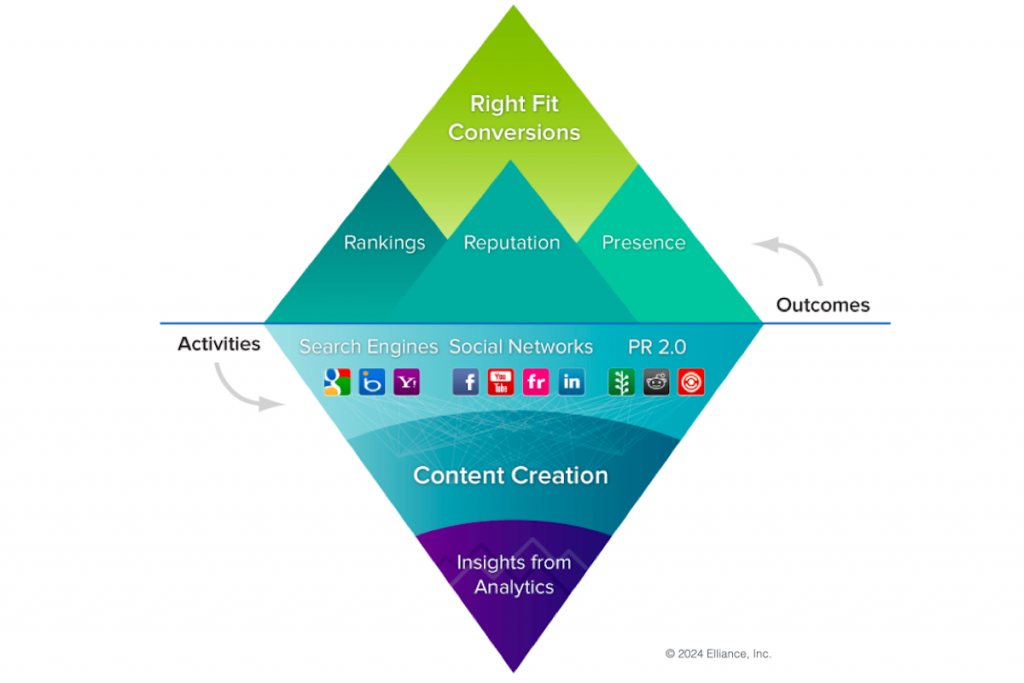
As Pittsburgh’s longest standing SEO/Inbound agency, Elliance has been delivering prosperity to regional, national and multinational clients for the past 28 years.
Before I share our best practices, let me define two terms with a little history lesson. SEO or “search engine optimization” is the process of improving your website to increase its visibility on Google, Microsoft Bing, and other search engines. In the early days, the first search engines trusted marketer’s claims and the quantity of claims. Marketers naturally began to game website content by jamming boatloads of content on their websites. Google came into the picture and changed the game: instead of ranking websites based on marketers claims, it started ranking them based on conversations and inbound links to the marketer’s website from other websites. In turn, marketers started buying inbound links from content farms that were created to game Google’s algorithm. Google got smarter yet again. It started penalizing websites for content stuffing and buying links from content farms. It diversified its ranking factors to include legitimate brand discussions on quality websites and social media. Thus began the era of Inbound marketing. It involves marketers creating a continuous stream of high quality, trusted and relevant content (such as articles, blog posts, videos, infographics, white papers, thought leadership articles, social posts, quizzes, games, etc.) and igniting it via promotion and conversation-starters to encourage peer-to-peer sharing. Thus the label SEO was transformed into SEO/Inbound marketing, even SEO/Inbound/Content marketing.
Our SEO/Inbound best practices arsenal includes:
1. Know that SEO/Inbound is a long game
SEO/inbound is more trusted and creates an enduring foundation. Paid media catches prospects at the cusp of a purchase. Done well, marketers can reduce their paid marketing spend as SEO rankings are achieved. Paid advertising and SEO/Inbound marketing are good along, better together.
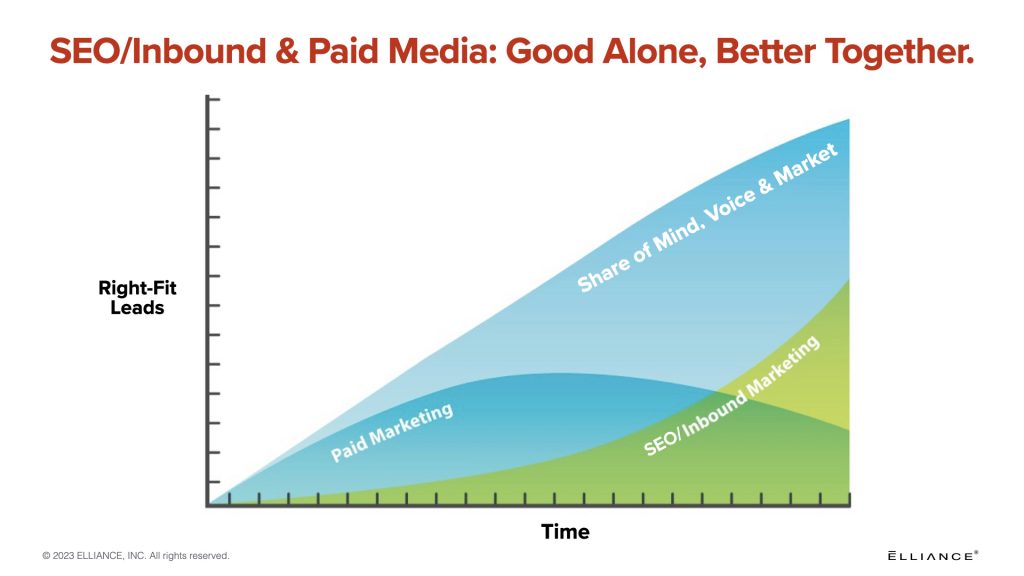
2. Identify Your Goals and Objectives
Agree on your primary goal. These could include one or more of:
- Growing demand for all products and services.
- Fortifying Brand Reputation locally, regionally, nationally and internationally — in all areas of expertise and strategic priorities.
- Recruiting Talent by going direct to prospective employees habitually reliant on confusing job portals
Your tactics should change depending on your selected goal(s).
3. Establish a Multi-Year Attack Plan
Take the long view. Develop a plan that goes after the lowest hanging fruit first (local and regional rankings), then harder-to-achieve national rankings, and finally the hardest-to-achieve international and reputation rankings. Slow and steady wins the race.
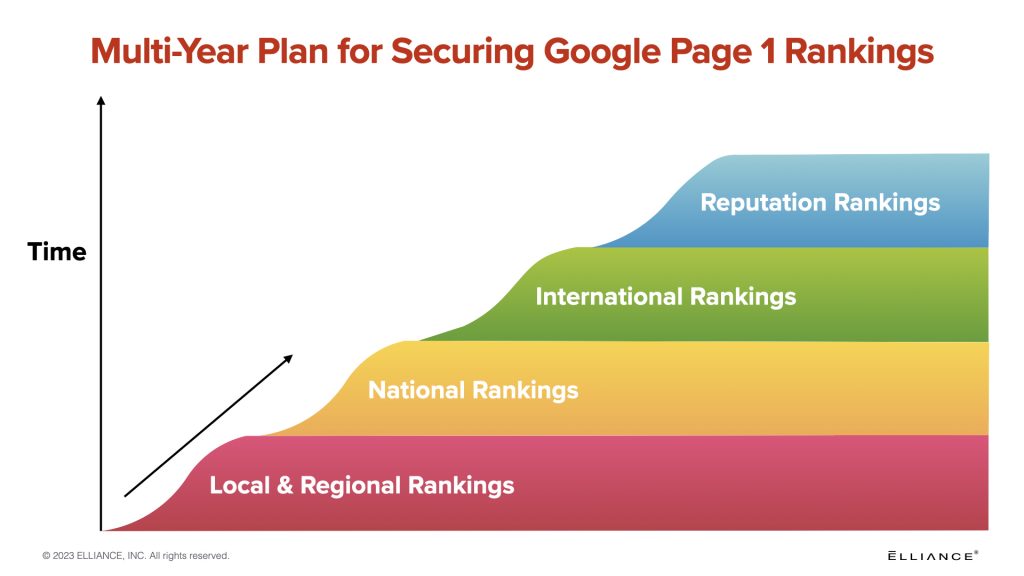
4. Create a Keyword Lexicon for Each Stage of the Decision Funnel
Craft a Keyword Lexicon. The lexicon is comprised of keywords and key phrases your brand should rank for. Categories in the lexicon include product and service keywords, brand positioning keywords, reputation keywords, decisioning keywords, and location keywords.
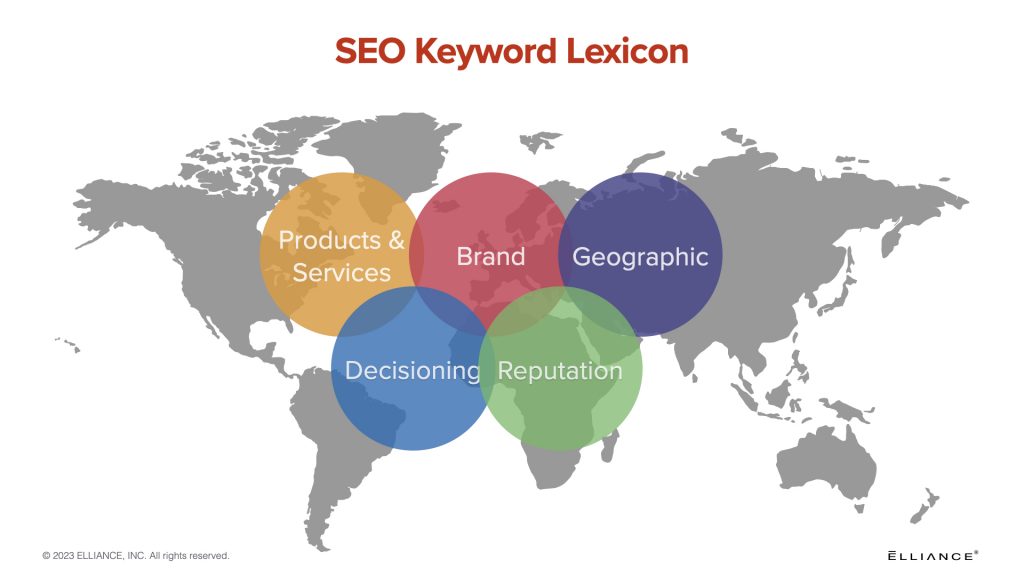
Know that prospects use different clusters of keywords at each phase of the decision funnel. e.g. they’ll use reputation keywords during the awareness phase, category keywords during the consideration phase and branded keywords during the preference/purchase phase. Write optimized copy that responds to the issues that matter in each specific phase of the decision cycle.

5. Make your website responsive, secure and fast
Google rewards responsive websites – the ones that auto-adjust gracefully on smartphones, tablets or desktops. Google also ranks higher those websites that load fast and are running in secure mode.

6. Optimize all Assets for Search Engine Bots
Because Google serves up a mix of copy, images, videos, maps and tabular data on a search results page, make sure you optimize copy, images, videos, pdf’s, tables, links, and meta-data on every website page. Search engine bots also review assets on social media channels, so make sure these assets are also optimized.

7. Multiply Social Signals
Because social signals (a webpage’s shares, likes and social media visibility) impact organic ranking, make sure they are added to every page of your website.
8. Create Ongoing Content to Secure Top Rankings for Important Keywords
Secure top rankings for your flagship products and services by developing trusted, sharable and optimized content to secure and sustain top rankings for each on Google. The more competitive a keyword, the more high-fidelity content you’ll have to create to secure and sustain page 1 rankings.
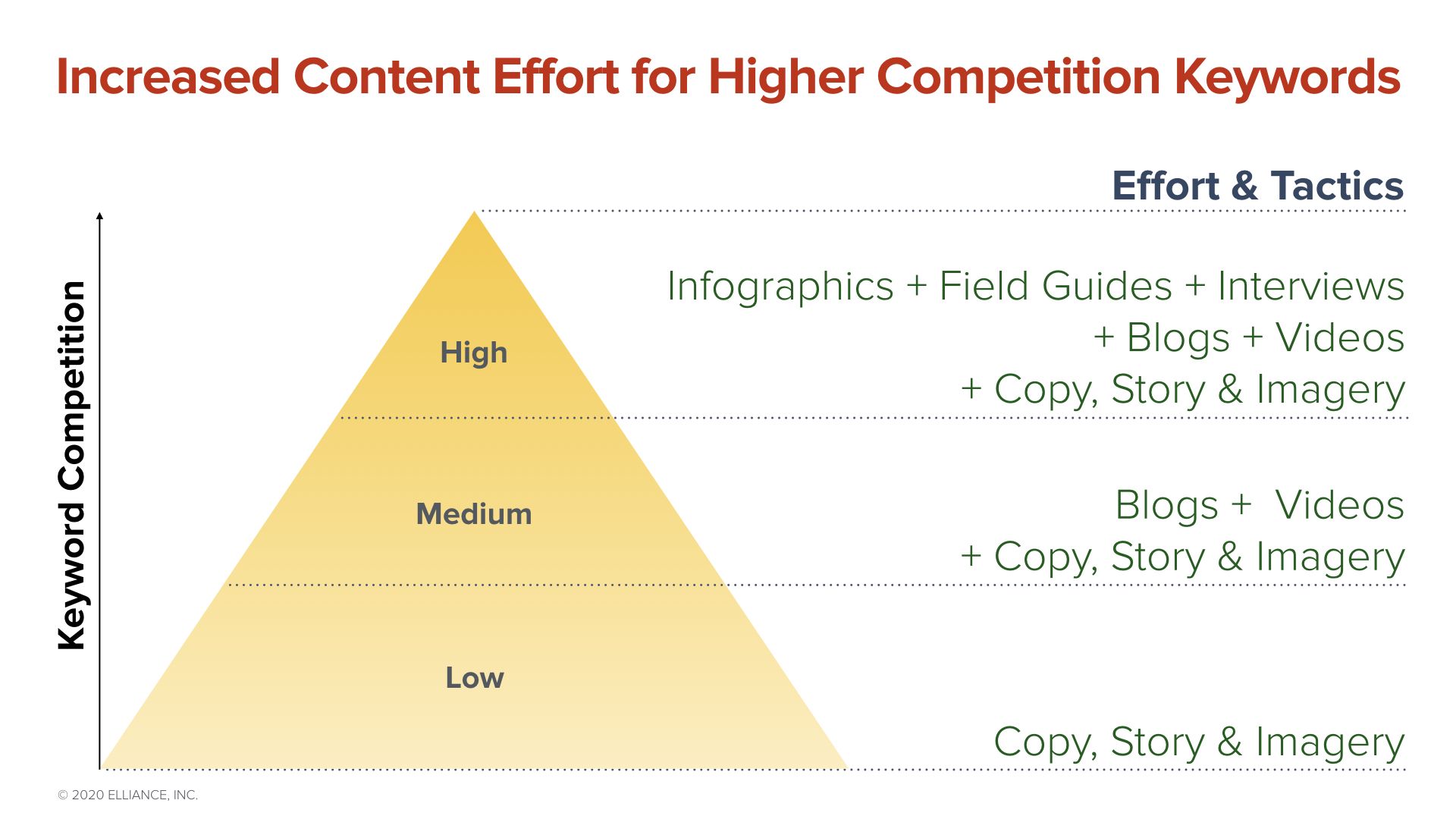
9. Embrace Voice Search
We have entered a new era of “natural language”, “sentence based” and “question based” search with the advent of voice-activated search on mobile phones (like Google Assistant, Siri, Microsoft Cortana and Amazon Alexa) and gadgets like Amazon Echo, Google Home, Apple HomePod and others. Since 30% of searches are now voice driven, take the following steps:
- Make it speedy and responsive. Speeding it up. If your website isn’t responsive yet (i.e. auto-adjusts gracefully to mobile devices, tablets and desktops) make it so.
- Write colloquially. Since people won’t change their speaking habits for the computer, write new content using everyday vernacular.
- Write page summaries. Write short, persuasive, 29-word page summaries above the screen fold on long-form pages. These summaries act as pop-up snippets served up by voice searches on mobile devices and home gadgets; they also appear as answer boxes on desktop search results.
- Build social shares. Run social share campaigns because the more shared the page is on Facebook, twitter, LinkedIn and other social channels, the more likely it will surface on voice search.
- Think globally. Act locally. Since more than 20% of searches are local, add phrases such as ‘near me’ into your copy, especially if you are a local or regional brand.
- Rank high on desktop/mobile search. If your website is not ranked on desktop/mobile search, it is unlikely that it will be ranked on voice search. Therefore, before investing in voice search, focus on achieving top rankings on desktop/mobile search.
10. Monitor and Protect Keyword Rankings
Measure keyword rankings weekly if not monthly. Watch competitors for signs of encroachment, and counter their moves on an as-needed basis.
11. Measure ROI with Marketing Automation Software
We know that leads generated from SEO/Inbound out-convert paid advertising leads by three-folds. We also know that the best prospects prefer to “discover” the brands of their choice through word-of-mouth on social media and via “accidental finds” on Google page one. To confirm and quantify this, connect the dots between SEO/Inbound efforts and conversions, deploy marketing automation software like HubSpot or Pardot.
If you are seeking SEO marketing agency for your organization, view our SEO capabilities and consider partnering with us.
